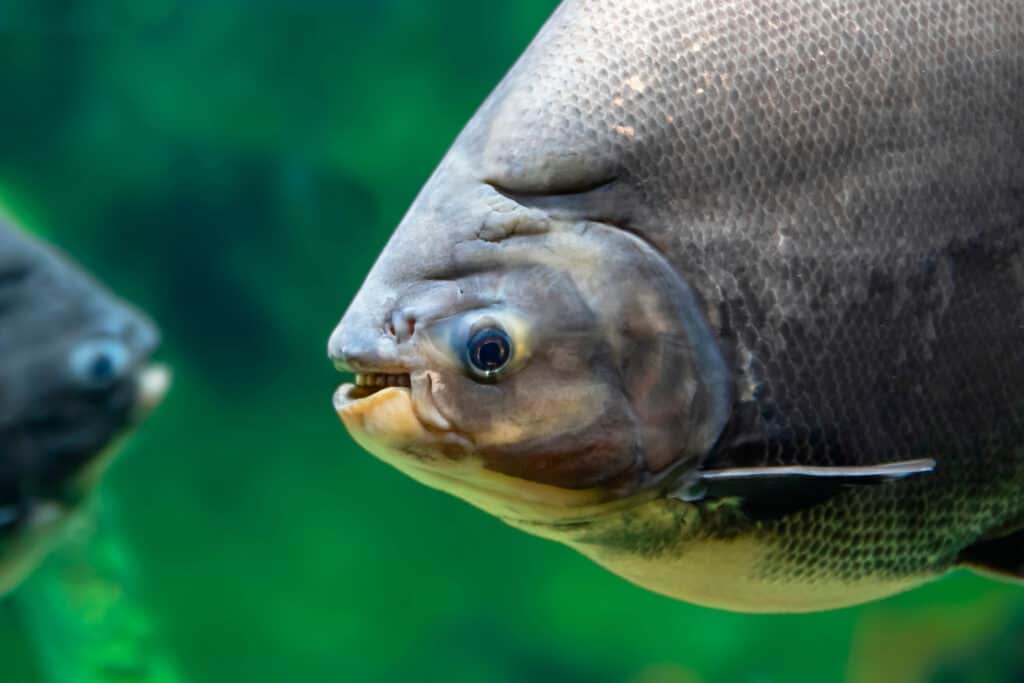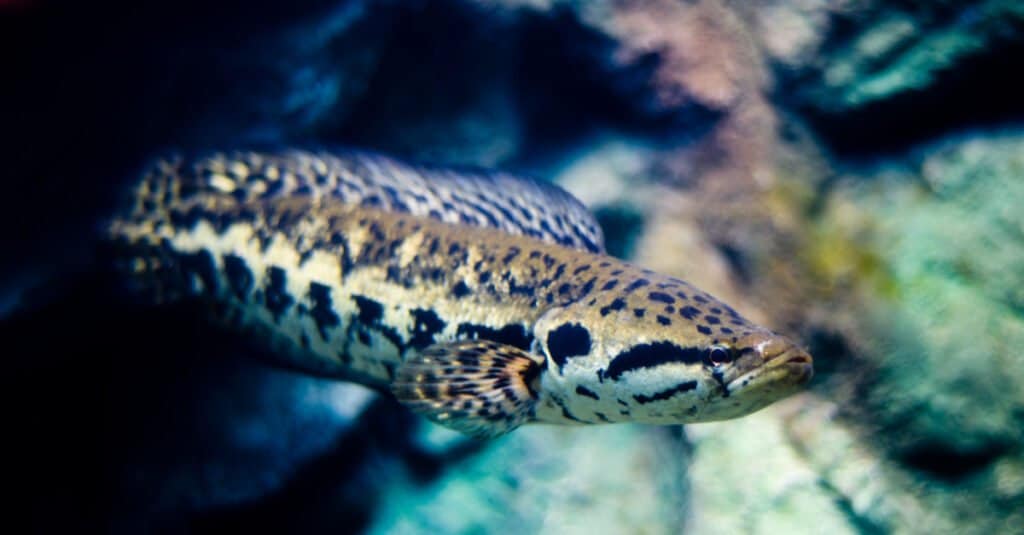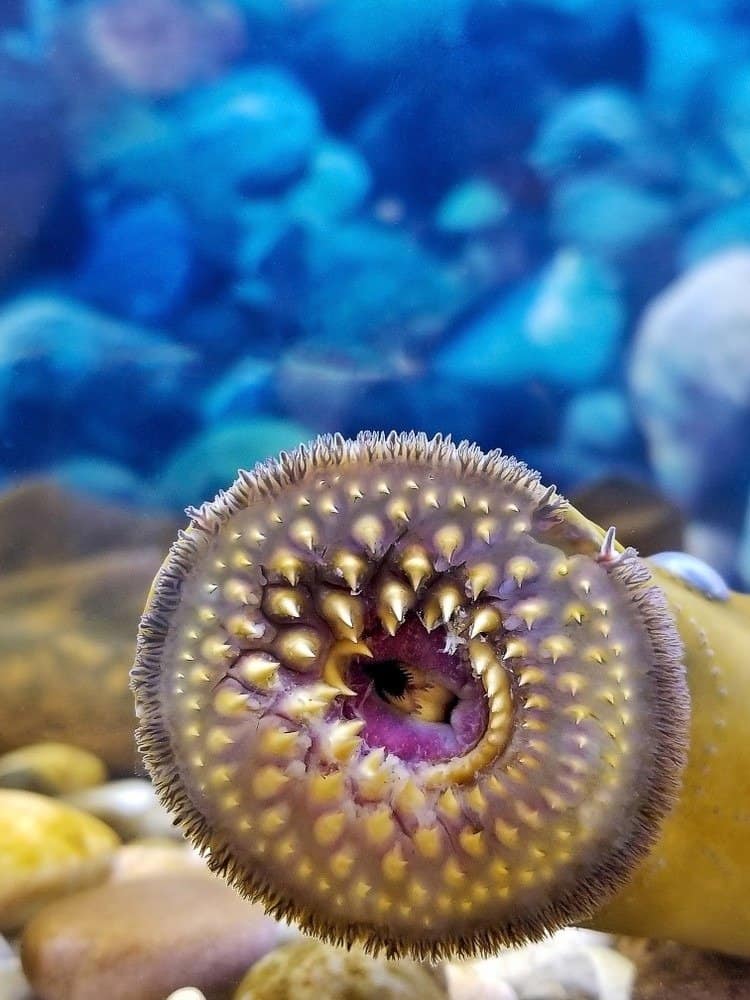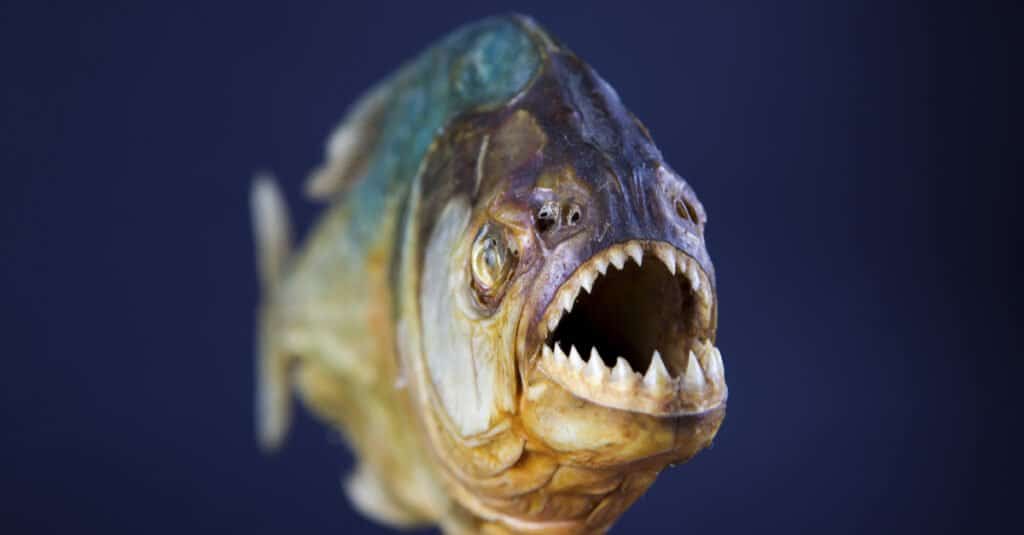A marketing stunt for the Discovery Channel backfired when they created a video and false news report of a bull shark swimming in Lake Ontario. It was in fact a joke as a promotion for Shark Week, but it got a lot of people concerned. They had to come clean about the stunt earlier than planned and were quick to admit it was a “life-like prosthetic shark”. There are not sharks in the Great Lakes (despite occasional claims that there are) but there are other dangerous fish that do live in the Great Lakes.
Do Dangerous Fish Live in the Great Lakes?

There are a few species of fish that are dangerous fish that live in the Great Lakes.
©iStock.com/Posnov
Yes. There are a variety of dangerous fish that live in the Great Lakes. None of them are native to the lakes but have been introduced either accidentally or on purpose. People who have aquariums with exotic fish will sometimes release their fish if the fish get too big or the owners can no longer can care for them. This is a huge mistake and takes a toll on the natural ecosystem. Invasive fish can kill and eat all kinds of other species and vegetation, wreaking havoc on the balance of the lakes habitat. Three of the most dangerous fish in the Great Lakes are the pacu, snakehead and sea lamprey. Wait until you see photos of these fish!
What is a Pacu?

The tambaqui
(Colossoma macropomum)is a freshwater fish also known as black pacu, black-finned pacu, giant pacu, cachama, gamitana and pacu.
©Edvard Ellric/Shutterstock.com
A Pacu is a large freshwater fish that lives in the Amazon River in South America. It is related to the piranhas but it has very, very different teeth. It looks like their teeth are photo-shopped but these fish actually have teeth that look like human teeth! They actually have powerful jaws and a painful bite but they are not particularly aggressive. The problem with keeping this exotic fish in your aquarium is that they can get to be 3 feet long!
Have Pacus Been Found in the Great Lakes?
In 2016 the Michigan DNR had three reports of the strange looking Pacu showing up in the Great Lakes. They reported that every other year they have a report of finding one of these. So there are not schools of these fish in the Great Lakes and it is not a problem yet, but it only takes a few apex predator species to take over a new ecosystem. On January 12, 2021 a Pacu washed up on shore in Pennsylvania, having been found in Glade Run Lake in Butler County. This one was about 12 inches long and dead, but who knows how long it had been living in the lake. Pacu are a warm-water fish and are not equipped to deal with cooler temperatures so it is unlikely they would survive the winter in any of the Great Lakes.
What is a Snakehead?

Snakeheads are an invasive species that looks like a water snake.
©Narongchut/Shutterstock.com
Judging by the name these are not a popular fish. They do actually have a head that looks like a snake. They are not native to the Great Lakes and are causing problems because they have a ferocious appetite and compete for food with the popular sport fish bass and walleye. Snakeheads are a long narrow fish with snake-like head and mouth full of teeth. Their coloration has a molted snake-like look as well. Adults can get to be 3 feet long. Because they feed in schools you can imagine the damage they can do in a short period of time. Snakeheads are sometimes called “Frakenfish” because they can survive on land for 3-7 days! They have to remain wet but can use their air bladder to process air and survive. Amazing! Currently there is not a breeding population of snakeheads in any of the Great Lakes.
What is a Sea Lamprey?

Check out the mouth of the Sea Lamprey. It has seven rows of sharp teeth on its suction cup mouth.
©Maria Dryfhout/Shutterstock.com
If you thought those first two fish were “unique” looking you are going to be surprised by the sea lamprey. Can you imagine enjoying a sunny June day on Lake Michigan floating on a floaty to look down and see one of these! Sea Lampreys are established in the Great Lakes and they are a huge problem. The Sea Lamprey is a parasitic fish that uses its large tooth-filled suction cup mouth to latch on to other fish. They feed off other fish which frequently leads to the death of the fish.
Why are Sea Lampreys a Dangerous Fish of the Great Lakes?

This brown trout has two sea lamprey that have attached themselves to it. The Sea Lampreys killed thousands of trout in the 1940’s.
©Sweeting, Roger [Photographer] (2016) Sea lamprey parasitising brown trout. Freshwater Biological Association, UK / Creative Commons – License
Sea lampreys have been a huge problem for decades that started back in the late 1940’s. With the addition of a new canal by Niagara Falls, the sea lamprey were able to enter the Great Lakes. With very few predators and an enormously fast reproductive rate they took over. For example, before the sea lampreys invaded there were around 15 million pounds of lake trout per year, by the early 1960’s that had dropped to 300,000. Think about all the people that depended on the trout business that were now out of work. Conservationists continue to try to control and reduce their populations.
Are Sea Lampreys dangerous to people?
Sea Lampreys are not dangerous to people. They do not really latch onto people or bite people and if they did you could easily remove them. It takes a while for them to suction themselves onto a host and people wouldn’t let a sea lamprey do that. Sea lampreys are about 1-2 feet long and have a large circular mouth.
Are There Piranhas in the Great Lakes?

Luckily there are not piranhas in the Great Lakes. Look at those teeth! Wouldn’t want a school of those on my beach.
©simongee/Shutterstock.com
No. There are not piranhas in the Great Lakes. Every now and again there are reports of someone finding one or of people releasing piranhas into the lakes but there is not a breeding population. Red-bellied piranhas are from the Amazon River basin in South America. They can get to be a foot long and weigh 4 pounds but the problem is their mouth full of razor sharp teeth. These do not look like human teeth like the Pacu. The second problem is they hang out in schools of 20 or more fish so a group of them can be very threatening. Piranhas also have a long life-span of up to 10 years so conservationists are staying on top of keeping them out of the Great Lakes!
Why are the Great Lakes Dangerous for Swimming?

Waves in the Great Lakes can reach heights of 25 feet or more.
Image: Kenneth Keifer, Shutterstock
©Kenneth Keifer/Shutterstock.com
The dangers of the Great Lakes don’t include scary fish – and we won’t even get into the history of the many shipwrecks – but these massive bodies of water are so huge that they carry many of the same risks for swimmers as oceans. Dangerous currents and powerful breaking waves are common – as are rip currents and breakwaters near river outlets found near piers that are extremely dangerous and lead to drownings.
Most lakes produce waves in small ripples only one foot in height. The Great Lakes have been known to generate waves more than 25 feet high – capable of sinking a 500-foot freighter. Furious storms can come quickly and without warning. It is recommended that you check with lifeguards before entering the water – to make sure the currents aren’t dangerous. Remember, that could change in minutes!
The photo featured at the top of this post is © Gena Melendrez/Shutterstock.com
Thank you for reading! Have some feedback for us? Contact the AZ Animals editorial team.






